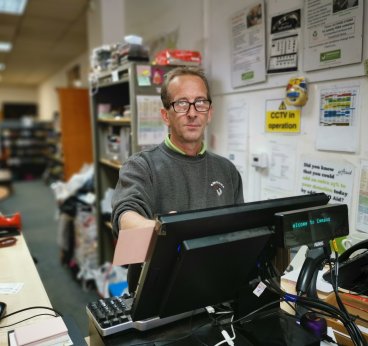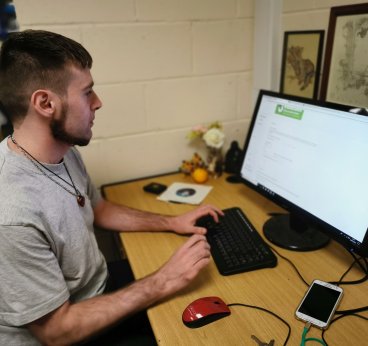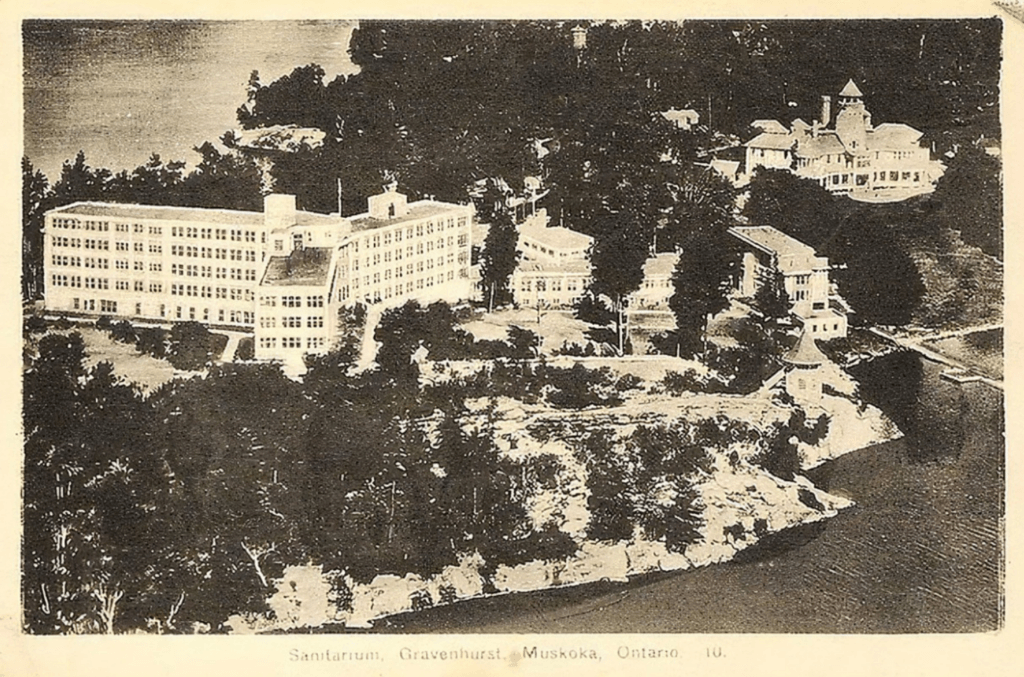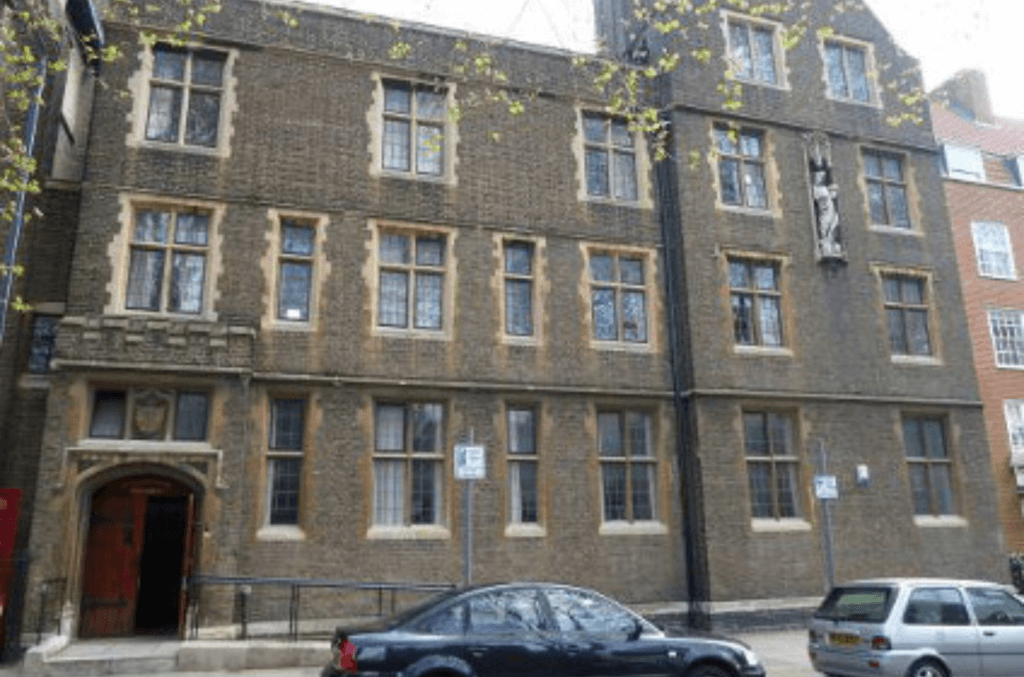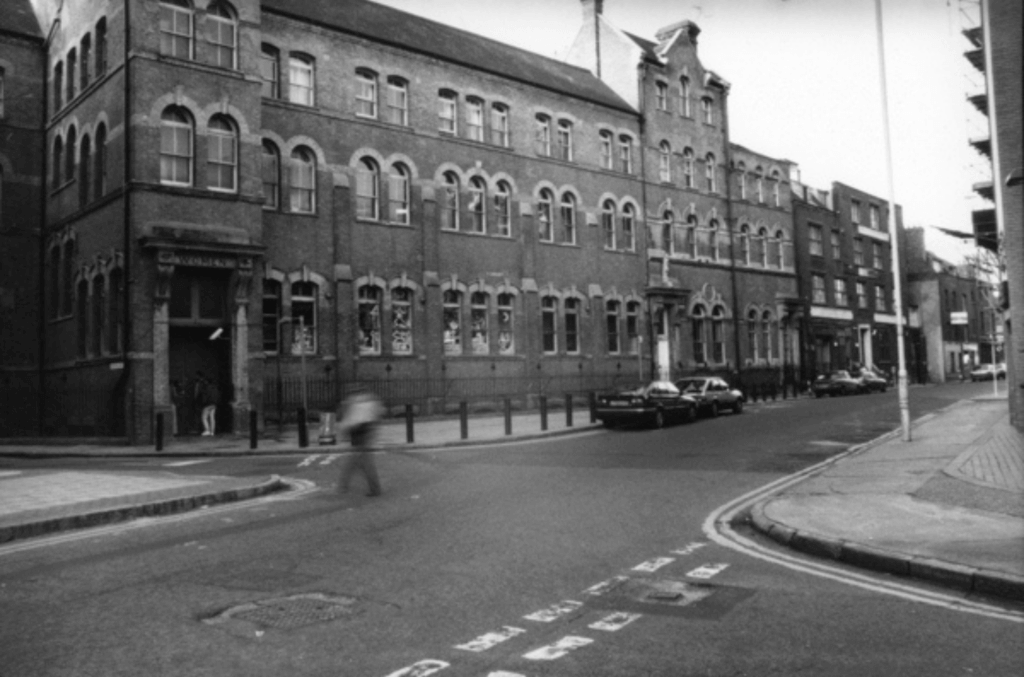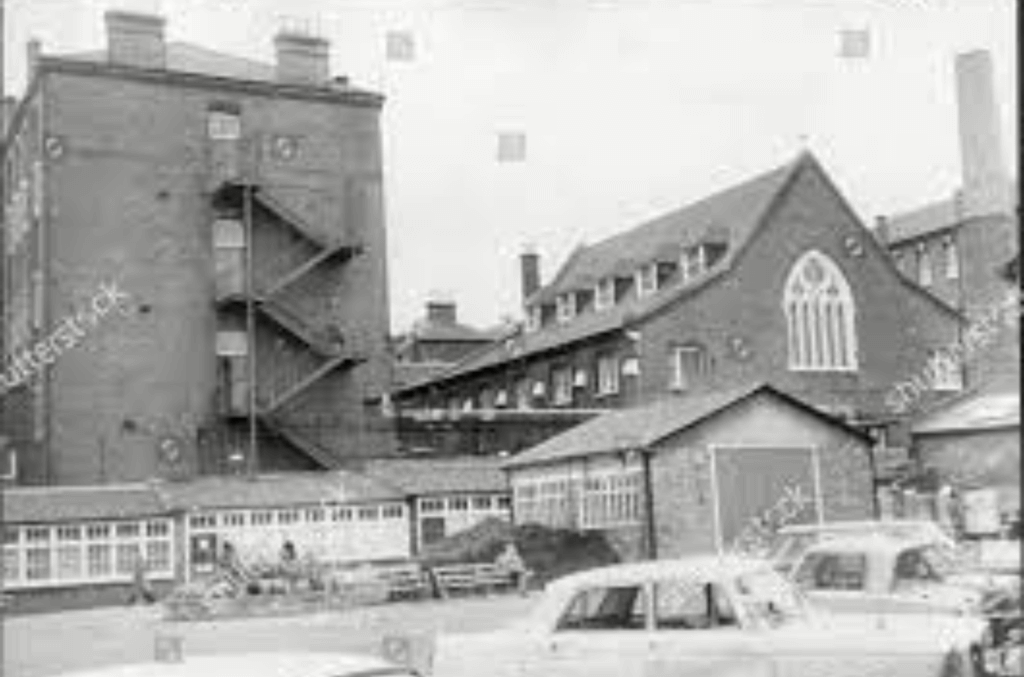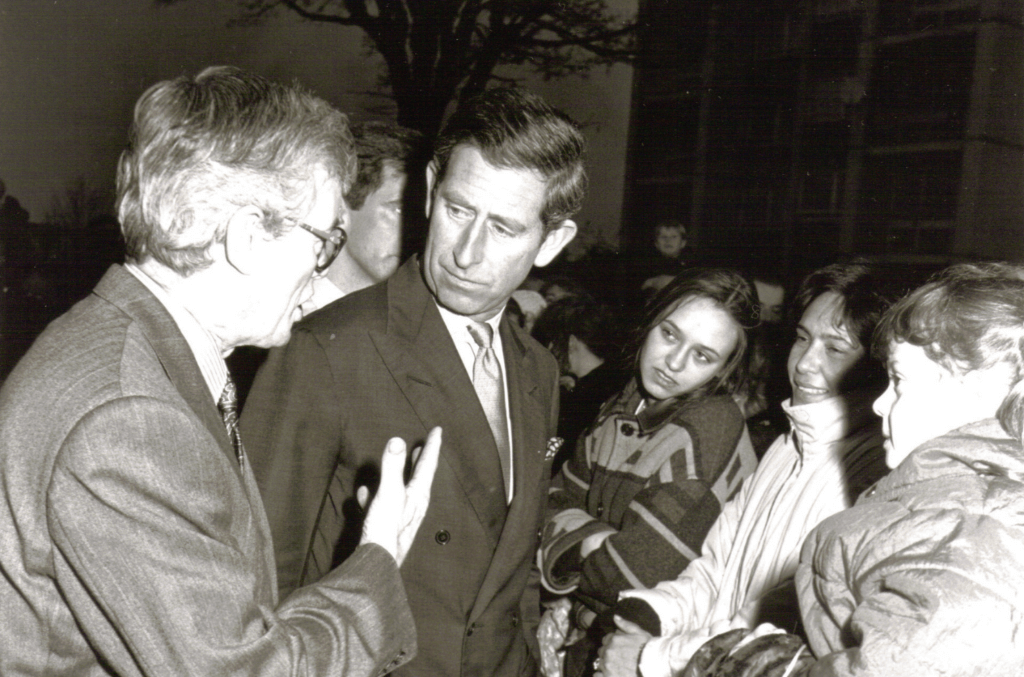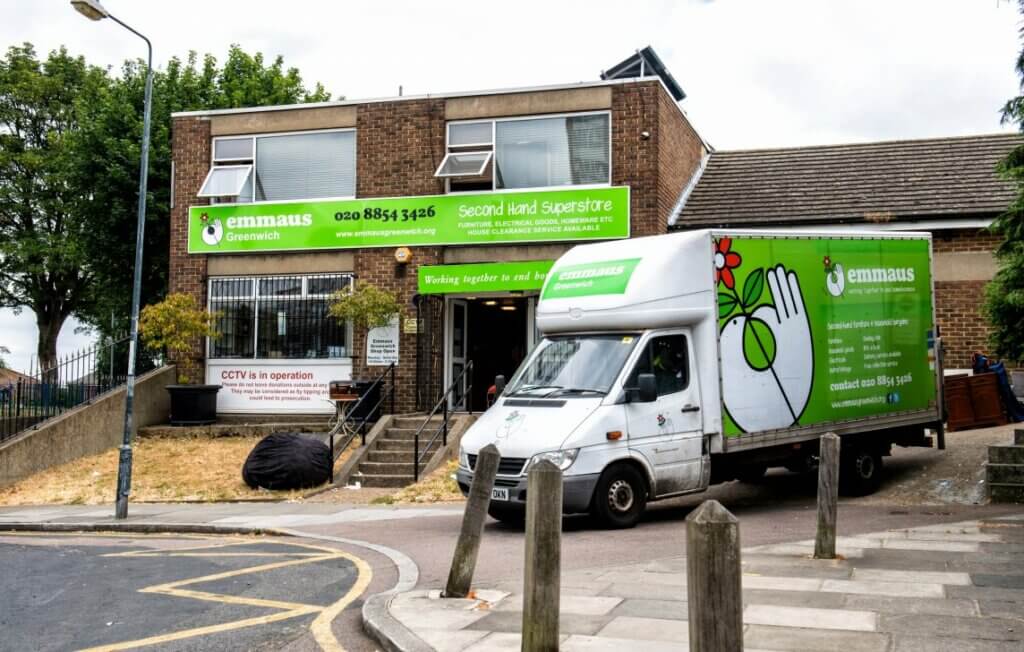Step into the extraordinary life of Anthony, who embarked on a remarkable 35-year career in the homelessness sector. Some of his experiences include working in a TB sanatorium helping to care for people rescued from concentration camps, working in London’s oldest refuge, helping to close the notorious Camberwell Resettlement Unit, advising the government on alternative models of care, meeting influential figures like Abbé Pierre and Prince Charles, and coming out of retirement after just one weekend to help set up Emmaus Greenwich.
Anthony has been a life long supporter of Emmaus and now volunteers at our Emmaus community every week. As you delve into his inspiring story, you will see the issue of homelessness over a span of more than 50 years and you may be reminded that homelessness remains an urgent issue to this day. Despite progress, there are still countless individuals facing homelessness, making Anthony’s dedication and legacy as relevant as ever.
Anthony’s story
I’ve always loved Emmaus from the first moment I experienced it. I was a nurse in London for ten years before going on to have a 35-year long career in the homelessness sector. In the 1990s, I helped to set up Emmaus Greenwich and I now volunteer every Thursday at Emmaus Gloucestershire.
Journey into the homelessness sector
I’m from Blaisdon, a tiny village in Gloucestershire’s Forest of Dean, but moved around a lot in Europe before going back there in 2021. As a young man whose background was a parentless WW2 orphan, I spent my summer holidays working in hospitals in France and saw Emmaus in action over different parts of the country. In 1960, when I eventually left farm labouring in Blaisdon, I went to work in a TB sanatorium in Belgium. I worked with people rescued from concentration camps, who were all elderly by then and afflicted with incurable pulmonary and generalised Tuberculosis (Consumption). That began what turned into 10 years of nursing in London.
While I was there in Bethnal Green, I volunteered at a Priory, and the resident Augustinian monks delegated me to be on the door once a week because people who were begging would knock on it daily. Every Tuesday for a couple of years, I responded to calls for a variety of help and that’s how I got into homelessness directly. My job was to welcome people in, make a warm drink, knock up a sandwich, and just listen to their story in a quiet confidential corner. I then started to build up my own record. I used to ask people where they slept the night before and I built up a database of where I could offer accommodation to the next person. Together, the Prior Father Hilary Carter and I devised a system of pre-paid free bed-for-the-night vouchers so destitute callers could get a foothold in a – usually – Salvation Army hostel: as there were five in the East London area. Pre-paid London Transport tickets were provided, together with a Luncheon Voucher. It was basic charity in action.
My first actual work with homeless people directly was getting involved in a soup run with Quaker Action in the 1970s. I used to go out at 2am with a group of charitable people, often off-duty female nurses, who gave out soup and bread at nighttime.
Starting at 2am was a very significant action back then – the visibility of homelessness was not something that was apparent in my day. If you wanted to do something to help people who were homeless, you had to go out after midnight to find them. It’s not like today; the visibility of those in need is evident everywhere.
For me, that’s a disappointment. When I look back on my life, my aim, along with associates, was to find a solution to homelessness: spread the word into social policy for action. Emmaus is part of that solution. That’s why I volunteer at Emmaus Gloucestershire every Thursday.
- St Joseph’s Home Orphanage, where Anthony lived from 1945-1952.
- Anthony’s first job – Stud Farm, Blaisdon in Gloucestershire, 1955-1961.
- Mont sur Meuse sanatorium, Belgium, January – October 1961.
- Bethnal Green Augustinian Priory, 1963-1968.
Working professionally in homelessness
Eventually I started working professionally as a civil servant in a local social security office. The homelessness sector became part of my job leading me eventually to advise the government on alternative models of care. Back then, the government was looking at all these London and Metropolitan-based warehoused single men and women units, where there could be up to 1,000 souls lodged at any one time. Rudimentary social work welfare assistance was the norm. “Something had to be done!”
When hostel users had a drinking or drug problem, they were usually rejected from their temporary accommodation and readmitted when they had gone through the process of ‘cold turkey’ recovery. It was called – the revolving door syndrome – and it was very unsatisfactory. The effect was to only offer help when people got to rock bottom. It was annoying to me because I believe in early intervention. Unfortunately, the traditional system then was allowing people to descend to rock bottom and then have a slow climb up – with many homelessness slip-back-relapses – to recovery.
I had opportunities to recommend Abbé Pierre’s Emmaus model in the 70s and 80s, but the government went with the Foyer system, which is a different French model. It was trying to bridge the gap between young people entering stereotypical or traditional homelessness, which was street living, usually prison, periods spent in a psychiatric unit and then into night shelter-type hostel’s subculture.
The Providence Row Night Refuge – London’s oldest refuge
In 1972, I became welfare administrator for London’s oldest refuge for men and women – The Providence Row Night Refuge in Spitalfields, London. I think it was a model of its time when it opened in 1860, with hundreds of homeless men and women admitted every evening.
I was brought in to introduce Social Security benefits. The Refuge provided a free straight off-the-street dormitory access night shelter. The highest level Department of Health and Social Security assessment officials indicated to the Refuge trustees that they could sponsor the night costs for anybody using the shelter. It didn’t reduce the opportunity for people to come in, even if they weren’t receiving social security benefits, but it did bring a lot of money into the Refuge, which meant we could staff it better and improve on basic comforts. These were: a hot supper, bathing facility, fresh replacement clothing and footwear, a clean bed for the night, and breakfast.
In the 1880s two of the last victims of Jack the Ripper sheltered in the Refuge before they were killed. There was a connection there and I exploited it – after the admission procedure was complete. Every Thursday night in the winter, I led Jack the Ripper walking tours to raise money for the Refuge. I strolled with the curious in the dark of night around the streets pointing out things and making connections between Dickensian observed poverty of that time and poverty of the current day. Interestingly, one of the bodies was found on Brady Street…my surname is Brady, so that was always a nice point to share!
- Providence Row Night Refuge, 1973-1980.
Closing The Camberwell Resettlement Unit in the 80s
The Camberwell Resettlement Unit was a huge former Victorian Workhouse situated in Gordon Road, in Peckham South East London, that functioned as a WW2 temporary casualty hospital and then became an open access 24 hours service for homeless people with 1,000 beds. Over many years, this large institution became what the local papers referred to as filled with “just about the worst failures of the social services system.”
The embarrassment was that it was actually run by the Department of Health and Social Security; where one would expect it provided well organised care. Unfortunately, the staff were running it in brutal ways that became totally irresponsible. It became customary to beat up residents for example or rob their social security benefits. One of the major charities in the 60s to 80s, CHAR – Campaign for the Homeless and Rootless – told the government that they would sue it because of the disgusting appalling management of this huge place of refuge.
The government told CHAR not to do that, and instead promised a programme of controlled closure so every person within would be needs assessed and found a permanent home. A specialist team was formed: it was named JART – Joint Assessment and Resettlement Team. I was recruited into it to assist in its formation and shape its goals.
When we did our social survey of Camberwell in order to devise a working plan, the total number of 1,000 people could be broken into three defined groups: those who could be housed with support in council housing; those who would need to go into projects where they receive continuous help with drug and alcohol problems; the final group would have to be readmitted directly into psychiatric hospitals because they were not receiving the care they needed. As many residents were aged we had to factor in a high death rate.
It was extremely complex, difficult, demanding, politically sensitive work. Still, we were given unrestricted financial government resources and set a target of five years to close the scandalous institution. We achieved it through working with the housing directors in all 32 boroughs in London, which gave us five units per year from their housing stock. We rehoused suitable capable residents offering them a choice of resettlement options, always providing continuing visiting support. Selected residents weren’t just removed into accommodation and left there. In addition, 25 housing charities were identified and in perpetuity funding arranged to expand and develop their housing stock. They took referrals from JART and provided the supportive elements key to effective resettlement. Those with mental health problems were either re-admitted to hospital care or, when socially functional, housed in purpose-built 24 hour staffed housing.
Once that scheme was completed, the government ordered JART to look at five other similar units in London. Camberwell was the intake point, but people would move out into more settled units with about 100 people per unit. The government wanted them closed too. JART argued that as they were in reasonable condition; they don’t need to be closed, they just needed to be adapted. So, our next challenge became obtaining the finance to upgrade these five units – one was actually in the West End’s Soho district. The ex-Camberwell staff were absorbed. The 5 units were transferred to a range of dispersed Housing Associations
That programme took up another ten years before completion. During the final five years I was promoted to Team Leader: my key tasks were concentrated on government Rough Sleepers Policy and I was catapulted into Whitehall, contributing to homelessness action research, PMQs, Green and White Papers. I was at the heart of policymaking and became familiar with the corridors of power in the two Palaces of Westminster. With my colleagues successfully career transitioned and job done I retired aged 55. My grateful government retirement settlement ensured that I need never work again. I retired on a Friday with a big send off.
- The Camberwell Resettlement Unit, often referred to as “The Spike.”
A weekend of retirement
On the first Monday of retirement, my wife got annoyed with me. The phone wouldn’t stop ringing and people were calling saying, ‘Anthony, we need you!’. Then I got a call from a group in Greenwich asking if I would join them: that’s how I got involved with Emmaus.
Emmaus was already well-established outside of the UK by the 1950s. When the first one opened in Cambridge in 1991, I went to look at it straight away. It made me even more determined to set up an Emmaus project in London and then Emmaus Greenwich offered opportunities.
I became the exploring funding Chairman of Emmaus Greenwich. The Greenwich Council had offered the foundation group a family unit where an experiment in social work had turned out to be too costly. Instead of social workers going round on their bicycles and cars doing social work, the council brought the whole family into this unit. The building contained about five different families at one time, and they were assisted, counselled and when deemed ready, rehoused from there.
We were offered the building for £250,000. I was already an experienced fundraiser and knew how to get money from wealthy people, government and charitable sources. We raised the £250k quite quickly – in about eight months. In fact, we were so confident that we started work on modifying the building, even though we didn’t have the money! It’s the same building Emmaus Greenwich uses to this day.
Next, we estimated that it would take another £250,000 to convert the building so we set about raising money for that. I don’t want to take the credit for this, but a wonderful providential opportunity happened at that time. I got a phone call from a representative of the Prince’s Trust. Prince Charles, now King Charles, had been approached from a possible donor who wanted to give money to the Trust, but his advisor mentioned that there’s a project called Emmaus starting up – in Plumstead – and that the potential donor should talk to me.
I was told to expect a call. When it came, the man said, ‘I’ve heard about you. Shoot from the lip I haven’t got much time’. I outlined Emmaus in less than five minutes, its philosophy and that it’s a proven system for caring for people who are without a settled way of life and characterised as homeless. Within two hours of the answered call, a motorbike courier arrived with a cheque for £250,000. Emmaus Greenwich was on its way…
Meeting Abbé Pierre, the founder of Emmaus
One of the highlights of my time at Emmaus Greenwich was meeting the Abbé Pierre, who I had admired all my life. He came to Emmaus Greenwich from France. He was already dying, but he managed to come and spend a night in one of the rooms we had prepared for him.
The first thing I saw of Abbé Pierre was him walking towards me and he said in French, ‘Clean the windows!’, which was what we were doing at the time. I was in a boiler suit! Someone told Abbé Pierre that I was the Chairman and we spoke for a few minutes in French, mainly about his health. I knew he was very ill. It was very moving.
A royal visit
I also hosted Prince Charles for nearly four hours when he visited Emmaus Greenwich for its official opening. I met him by the door as he arrived and was advised by his security to not bring him into Emmaus straight away but introduce him to the assembled public. A huge crowd gathered on the Glyndon Estate: what in those times sociologists labelled, “sharp-end inner city deprived…”. Prince Charles was chuffed when I mentioned two tower blocks from others in his sight had recently been demolished as part of an ongoing regeneration housing scheme.
The royal visitor had earlier specifically stated that he did not want to take tea with the foundation Trustees and that he would see them later. Instead, he desired that hospitality with the companions. He talked and had tea with six residents. A couple of them were from an Emmaus project in France: Prince Charles spoke to them in French quite freely.
There was one amusing moment during the visit. Prince Charles turned to me and said, ‘Anthony, have you ever eaten jellied eels?’ I said, ‘No. Well, Yes! Once actually’. He started to describe the taste of jellied eels with his face screwed up. I was reminded of his TV Spitting Image satire caricature. He had just come from opening a power station somewhere in the Lewisham area and a group of people in Deptford invited him to a pub, where he had a pint of beer and handled a punnet of jellied eels. That was quite funny!
After that session, I introduced HRH to the attendant dignitaries waiting in another area of the building. The Archbishop of Canterbury Robert Runcie, The Archbishop of Westminster, Cardinal Hume, and Terry Waite were there. I had always admired Terry Waite greatly and hadn’t met him until then. I didn’t introduce Prince Charles to the donor who gave us £250,000 because he wanted to remain anonymous. I don’t think I would be letting anything out of the bag now if I mention that he had a very strong connection with Chelsea Football Club.
- Prince Charles visiting Emmaus Greenwich for its opening launch
- Emmaus Greenwich today
Life today
That gives you a flavour of what I’ve been involved in. I’ve worked in every level of helping people who face, experience, live and die in the condition of homelessness and have been involved directly in the various ways of relief, basic assistance, resettlement, choices, that are possible.
After setting up Emmaus Greenwich and effective transition to new management, I moved to Northern Ireland where I lived for 25 years. I’m now back in Blaisdon on the farm where in the 1950s I witnessed hospitality given to what were called wayfarers. I am happy volunteering at Emmaus Gloucestershire – helping to sort, scan and identify the value of donated books.
Not enabling Emmaus in the UK until the 1990s, is what I regard as one of the few disappointments in my long productive, privileged years in the homelessness sector. There is however a satisfying recompense: Emmaus is part of the solution to homelessness and I believe that totally.

